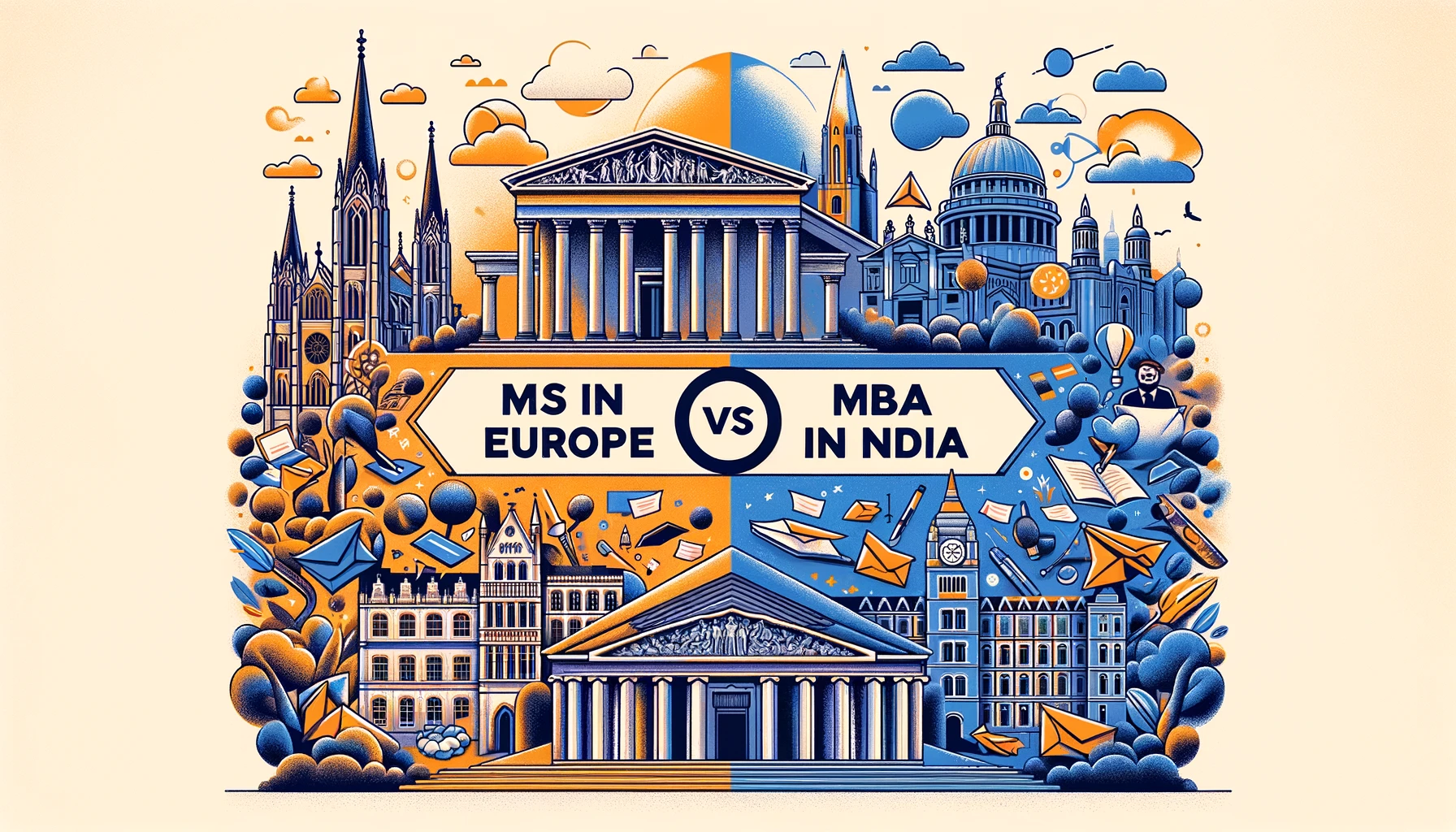When graduates with backgrounds in science (B.Tech, B.Sc, B.E., etc.) consider their further education options, two prominent choices often arise: pursuing an MBA or an MS (Master of Science) degree. The decision between these two paths can significantly impact one’s career and future prospects. While an MBA from a reputed institution outside India can provide a broader perspective, an MS degree is often more research-oriented. This article aims to delve deeper into this decision-making process, with a focus on tier I colleges.
Financial Considerations:
Cost plays a pivotal role in the decision between pursuing an MBA in India or an MS in Europe. For instance, an MBA from the prestigious Indian Institutes of Management (IIMs) can cost between 15-23 lakhs for a two-year program, including living expenses. India has been recognized as one of the most affordable countries for education, making living costs relatively manageable.
On the other hand, an MS in Europe typically ranges from USD 10,000 to USD 17,000 in tuition fees alone. Additional costs such as living expenses, student union fees, and registration fees can bring the total expenses to approximately 13,000-35,000 USD, roughly translating to 8-20 lakh rupees. This cost comparison demonstrates that pursuing an MS in Europe is not drastically different from an MBA in India in terms of financial outlay.
However, it’s essential to consider the potential return on investment in terms of salary. While IIMs advertise an average package of 12 lakh rupees, the actual average pay package often exceeds 20 lakh rupees for domestic placements. Foreign placements typically offer even higher salaries. An MS from Europe, for example, can lead to an average salary of USD 60,000 per annum, equivalent to approximately 40 lakh rupees.
It’s worth noting that some European countries like Germany, Poland, and the Czech Republic offer free education at their public universities if students are proficient in the native language. This applies to all postgraduate courses. Therefore, the financial aspect shows that both options can offer similar breakeven points, with India providing the advantage of a familiar environment and campus placements.
Career Prospects:
Another critical factor to consider is the quality of career guidance and placement opportunities. IIMs in India provide extensive support for career development, including campus placements and a structured approach to career guidance. In contrast, many European colleges offer a Career Guidance cell, placing the onus on students to search for job opportunities.
The effectiveness of your job search often depends on the network you build and the contacts you establish during your studies. The reputation of the college and the eligibility of your profile can also significantly impact your job prospects. In terms of salary and job prospects, both options can be attractive, but the Indian MBA provides more handholding and a comfortable environment.
Returning Home:
For those pursuing an MS abroad, the decision to return home is crucial. Statistics indicate that only around 30% of students decide to return home after studying abroad. The value of the course internationally and its applicability back home become critical considerations. It’s essential to determine whether the course itself holds enough weight or if gaining work experience after completing the course is necessary for finding suitable employment back home.
However, Europe’s stringent immigration laws, such as those in the UK, can make it challenging to stay and gain work experience. Unless your profile is exceptionally strong, your college is renowned for the chosen course, and your research experience is well-recognized, it may be difficult to establish a foothold in your home country.
In conclusion, the decision between pursuing an MBA in India and an MS in Europe involves a complex analysis of factors such as finances, career prospects, and returning home. Each option has its advantages and challenges, and the choice should align with your long-term career goals and personal preferences.
| Country | Tuition Fees (USD) | Cost of Living (USD) | Total Cost per Year (USD) |
|---|---|---|---|
| Austria | 1000 per semester | 11,000-13,000 | 13,000-15,000 |
| Belgium | 1,000-5,000/year | 11,000 | 12,000-16,000 |
| Denmark | 5,000-18,000/year | 13,000-15,000 | 18,000-33,000 |
| Finland | 2,000/year | 11,000 | 13,000 |
| France | 300/year | 11,000 | 11,300 |
| Germany | 11,000/year | 10,000 | 21,000 |
| Ireland | 11,000/year | 7,000-13,000 | 18,000-24,000 |
| Italy | 1,500/year | 17,000 | 18,500 |
| Norway | Free for public universities | 15,000 | 15,000 |
| Spain | 1,700/year | 11,000-14,000 | 12,700-15,700 |
| Sweden | 12,000-20,000/year | 12,000 | 24,000-32,000 |
| Switzerland | 2,000/year | 18,000-30,000 | 20,000-32,000 |
| Netherlands | 10,000-20,000/year | 13,000 | 23,000-33,000 |
| United Kingdom | 15,000-18,000/year | 18,000 | 33,000-36,000 |
In summary, if you’re leaning towards a science-related field, pursuing an MS in Europe may require a slightly lower initial investment. On the other hand, an MBA in India offers a higher likelihood of loan repayment due to the nearly 100% placement record of IIMs. Ultimately, your choice should align with your interests, as both options have their pros and cons.


